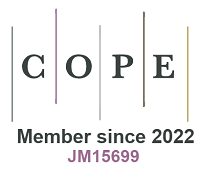Sterol biosynthesis: 2,3-oxidosqualene analogues
Recently, Krief et al.[1] reported the schizophrenic behavior of oxidosqualene sterol cyclase from pig liver towards 2,3-oxidosqualene analogs bearing two alkyl groups different from a methyl.
The topic of this work is the relatively limited area of squalene cyclization and its rather small aspects of steroid synthesis, but it is the most important biological[2] synthesis of human beings because it is the starting point of steroid synthesis. There are several mysteries of this selectivity, and the topic of this paper is one of the most important steps of biosynthesis. This paper clearly shows the reason for these mysterious issues. The final stage of cyclization generates the necessary rotation of the C-C bond to create the necessary stereochemistry of the product steroid[3]. The authors nicely used the different size of the alkyl group to explain the biological synthesis of steroids.
The paper “Schizophrenic behavior of 2,3-Oxidosqualene Sterol Cyclase from pig liver towards 2,3-oxidosqualene analogues” is outstanding because it solves the long-standing problem of sterol biosynthesis. Congratulations for a great contribution!
DECLARATIONS
Authors’ contributionsThe author contributed solely to the article.
Availability of data and materialsNot applicable.
Financial support and sponsorshipNone.
Conflicts of interestThe author declared that there are no conflicts of interest.
Ethical approval and consent to participateNot applicable.
Consent for publicationNot applicable.
Copyright© The Author(s) 2021.
REFERENCES
1. Krief A, Sable R, Ronvaux A, Dumont W, Sandra P, David F. Schizophrenic behavior of 2,3-Oxidosqualene Sterol Cyclase from pig liver towards 2,3-oxidosqualene analogues. Chem Synth 2021;1:6.
2. Thoma R, Schulz-Gasch T, D'Arcy B, et al. Insight into steroid scaffold formation from the structure of human oxidosqualene cyclase. Nature 2004;432:118-22.
Cite This Article
Export citation file: BibTeX | RIS
OAE Style
Yamamoto H. Sterol biosynthesis: 2,3-oxidosqualene analogues. Chem Synth 2021;1:7. http://dx.doi.org/10.20517/cs.2021.12
AMA Style
Yamamoto H. Sterol biosynthesis: 2,3-oxidosqualene analogues. Chemical Synthesis. 2021; 1(1): 7. http://dx.doi.org/10.20517/cs.2021.12
Chicago/Turabian Style
Yamamoto, Hisashi. 2021. "Sterol biosynthesis: 2,3-oxidosqualene analogues" Chemical Synthesis. 1, no.1: 7. http://dx.doi.org/10.20517/cs.2021.12
ACS Style
Yamamoto, H. Sterol biosynthesis: 2,3-oxidosqualene analogues. Chem. Synth. 2021, 1, 7. http://dx.doi.org/10.20517/cs.2021.12
About This Article
Copyright
Data & Comments
Data
 Cite This Article 9 clicks
Cite This Article 9 clicks













Comments
Comments must be written in English. Spam, offensive content, impersonation, and private information will not be permitted. If any comment is reported and identified as inappropriate content by OAE staff, the comment will be removed without notice. If you have any queries or need any help, please contact us at support@oaepublish.com.